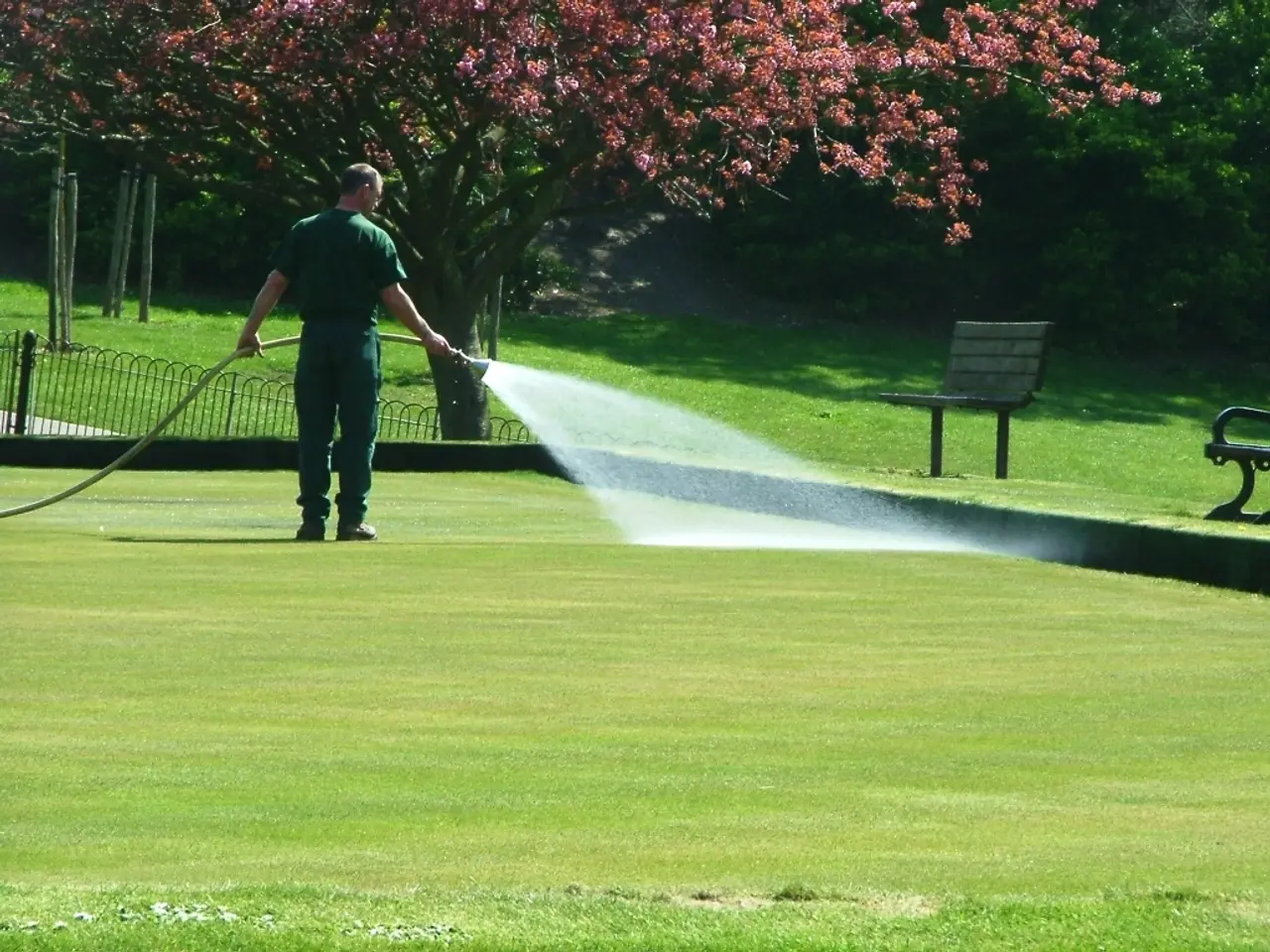Employ Drip Irrigation in Elevated Garden Beds for Maximum Yield with Minimal Water Usage
If you're looking to create an efficient and water-conserving gardening setup, consider installing a drip irrigation system in your raised beds. This method of watering targets the plant's roots, keeping water off the leaves, and encourages deep root growth while hindering weed growth between plants.
Choosing a Drip Irrigation System
When selecting a drip irrigation system, opt for components designed for low-pressure drip irrigation such as poly tubing, drip tape or emitters, connectors (like Power-Loc Tees), pressure regulators, filters, vacuum breakers, and electronic timers to automate watering. For raised beds, choose a system with a compact tubing layout and adjustable emitters that help evenly deliver water directly to plant roots, minimizing evaporation and runoff.
Installing the System
To install the system, connect it to an outdoor spigot using a Y connector with shut-off, install a vacuum breaker to prevent backflow, a flushable Y filter to protect against debris, and a pressure regulator to maintain optimal pressure. Lay out the poly tubing along the raised beds, using Power-Loc Tees to branch tubing for even coverage across all beds. Use a punch tool to create holes in the main tubing to insert connectors for drip tape or emitters that deliver water directly at the plant roots. Secure tubing and drip tape so the water is distributed uniformly, avoiding overspray or dry spots.
Winterizing the System
In cold winters, it's necessary to winterize a drip irrigation system to prevent freezing and potential damage. Because drip systems operate at low pressure, blowing air to clear water is not recommended. Instead, remove end caps on manifolds or tubing ends to allow water to drain out completely. Keeping tubing ends open accommodates ice expansion and prevents damage. Drain all water before frost to avoid freezing damage to tubing and connectors.
Additional Tips
Automating your watering schedule with a timer ensures consistent hydration, leading to healthier plants and potentially bigger harvests. Raised beds combined with drip irrigation create an efficient gardening setup that conserves water and simplifies maintenance.
For DIY gardeners aiming for a thorough understanding, video guides provide detailed installation walkthroughs and cost breakdowns. A raised bed can be built to fit a specific space using modular raised beds from Vego.
When choosing between rigid drip systems and flexible T-tape systems, consider that the former is more expensive but lasts longer, while the latter is cheaper but has a lifespan of only a few seasons.
The author, Teo Spengler, is a master gardener and docent at the San Francisco Botanical Garden, with over two decades of experience in horticulture and nature writing. For more information on growing delicious tomatoes, sign up to the author's platform newsletter to receive a free e-book titled "How to Grow Delicious Tomatoes".
To create an efficient home-and-garden setup with water conservation in mind, you may want to consider implementing a drip irrigation system in your raised beds, as suggested in the lifestyle guides by Teo Spengler. When doing so, be sure to choose components designed for low-pressure drip irrigation, such as poly tubing, drip tape, and emitters, to evenly deliver water directly to plant roots. Additionally, an electronic timer can be used to automate watering for consistent hydration, which can lead to healthier plants and larger harvests.



